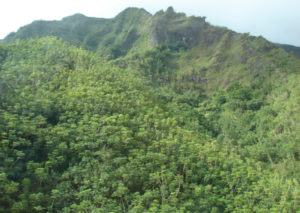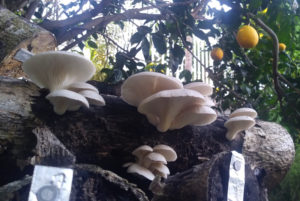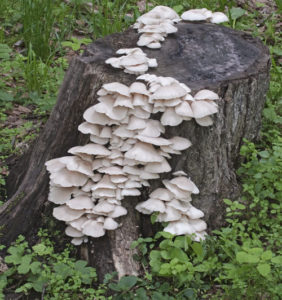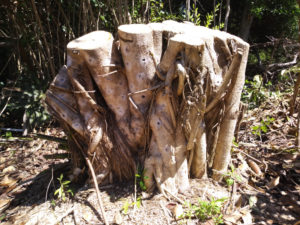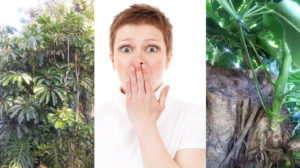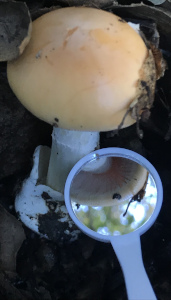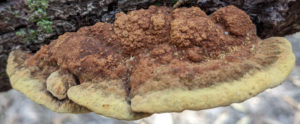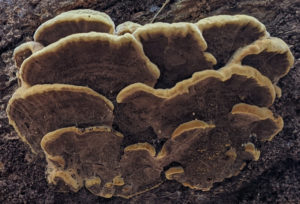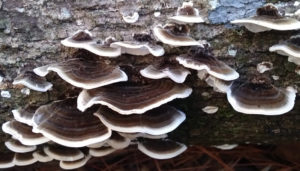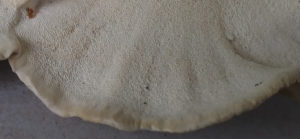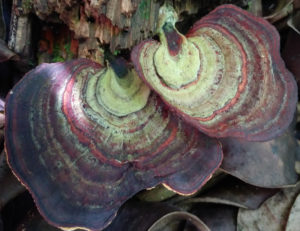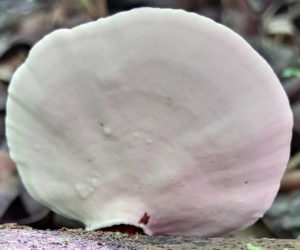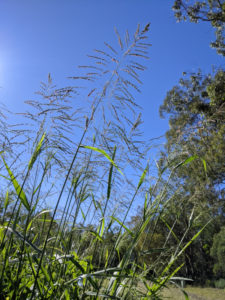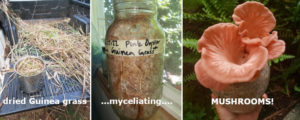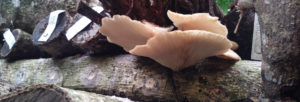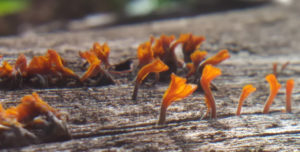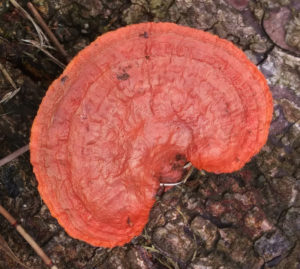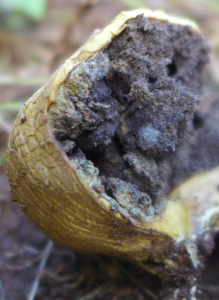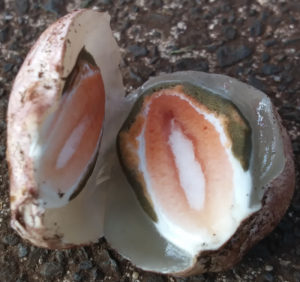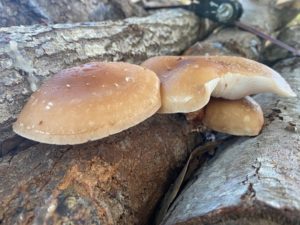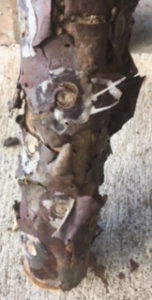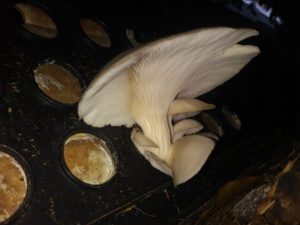Edible Mushrooms in my Worm Bin
Every single time Bagasse Mushrooms appear in my compost I am amazed. Mainly because these mushrooms are considered to be gourmet edible mushrooms, fetching high prices at markets worldwide, yet they have decided to volunteer in no less than 3 of my compost systems! Before these mushrooms, aka Paddy Straw Mushrooms (Volvariella volvacea), began appearing in my compost, I had never intentionally cultivated them; I have never introduced their spawn nor their spores to the land that I am stewarding. I have never even bought this species of mushroom from the market; so no parts of this species – neither tissue nor spores – have ever intentionally ended up in my compost after having been on my kitchen’s cutting board! And yet they have found their way to my compost systems. I suspect the wind has brought in their spores.
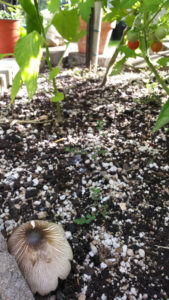
Bagasse Mushroom growing in a raised bed keyhole composting chute under fruiting tomato plants by Chase | Tropical Fungi Academy
Different mushroom species frequently pop up in my compost, most commonly different varieties of Inky Caps. Yet this mushroom species, no doubt due to its size, always elicits the “WOW factor” from myself & my roommates. Speaking of roommates, I can’t help but wonder if they are slicing-&-dicing Bagasse Mushrooms in the kitchen behind my back & surreptitiously sneaking pieces into our compost pails (they insist they are not though).
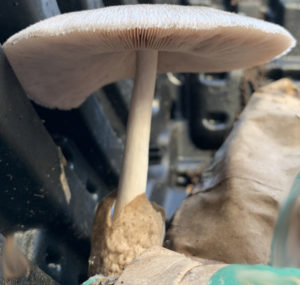
Bagasse Mushroom growing in compost tumbler by Chase | Tropical Fungi Academy
The Bagasse Mushroom is a hot weather loving mushroom that is widely cultivated in the tropics. Due to its extremely short shelf life, fresh specimens can only be purchased in locations very close to where they are grown. Most people around the world who eat these mushrooms get them preserved in tin cans labeled “Straw Mushrooms” from grocery stores. They are most typically eaten in soups & stir fries & are prized for their delightful aroma & umami flavor.
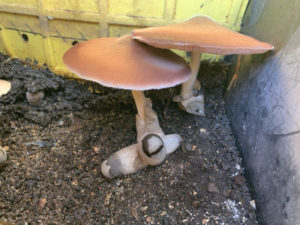
Bagasse Mushrooms growing in worm compost bin. Note the compost worm crawling in between them! By Chase | Tropical Fungi Academy
Distinguishing features of Bagasse Mushrooms are their compost habitat, a prominent & thick, sack-like egg at the base of the stipe, lack of a ring or skirt on the stipe, & pinkish brown to salmon-colored spores (as seen on the spore-dusted on the caps in the photo above).

